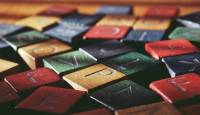LATEST BLOG:
Teachers need to use clear statements and shared readings when teaching the different sounds of letters to early learners.
Establishing the best steps for teaching letters and sounds to early learners can be tricky, but Diane Snowball believes the key is honest, clear statements.
Diane is a renowned educator and regular guest on The Teacher’s Tool Kit for Literacy. Her insights into supporting early learners featured on Episode 64, which replays a recent Zoom Q and A session with a group of F-2 teachers at a school in Victoria, Australia.
In this session, Diane said that step one for teaching letters is to teach young students the name of each letter and how to write them.
“You want them to know the letter name so that when they see it, they will be able to name it. And the reason why that’s important is because it allows us to have a discussion about the letter. And of course there’s just 26 (in the alphabet) and they can look two different ways. They can look like the capital letter or the lowercase letter. So the kids have to be able to recognise both upper and lowercase and be able to name them. And then they need to learn how to write them fluidly and legibly,” Diane explained.
Once students have a grasp of this, they also need to understand the sounds of letters. However, every letter in the alphabet can be said in different ways, which can become confusing for early learners. Therefore, being clear with statements and not using misleading information is crucial.
“You might say the letter B will always be a ‘buh’ (b) sound. Well actually, in a word like combs, the B isn’t even pronounced. So you can’t ever say that and think you are telling children the truth. You’re only telling them part of the truth. So the letter B can represent many sounds,” Diane said.
“It’s not the truth to say C says ‘cuh’ (c), because it only does in some words. And if your name is Cyril or Cecily, then you’ll actually be very confused by that teacher’s statement because in your name that’s not how the letter C is pronounced. So you don’t make statements that are not the truth of the language, and I’ve found over my years, the kids who are most confused by those statements are the ones who are finding reading a struggle. So we actually need to be very clear about the statements we make.
“And I want you to always think about a letter name as something you can say. The name of the letter is C, and the sounds it can represent are ‘cuh’, ‘ch’ when it’s with an H, ‘s’ when it’s in a word like Cecily, or in words like circus it might be represented by two different sounds. So I don’t have to make anything up. I can just talk about it as it actually is.”
The best way to approach teaching these varying sounds is through shared reading and using text types young students identify with. It’s also important to emphasise the listening aspect and not the visual component.
“You cannot look for a sound. You can look for a letter and you can look for a spelling pattern, but you have to listen for a sound … and that’s where it’s so important that you’ve been doing a lot of shared reading. Even if it’s from poems and rhymes and songs and a few shared reading books, you’ve got to go back to something that they can read in order to hear sounds. You can’t study the sounds that the letter C would represent if you can’t go back to something that they could actually say the words and hear the sounds in,” Diane said.
Through these shared readings and read alouds, teachers can then undergo activities such as getting students to make lists and categorise words with a particular sound.
“So when we’re listening to these words, for any words that we hear with the ‘cuh’ (c) sound, you can start to make a list of those … once you’ve listed a lot of words that have a ‘cuh’ (c) sound, what would you do next? Use them in your writing? No. Before that, we want to learn whatever we can about this category,” she said.
“For example, in each word first of all, you need to identify which part of the word is the ‘cuh’ (c) sound and underline it or circle it. And sometimes you’ll have it a couple of times in a word. But remember we’re only listening for the one sound. So if it was the word circus, I would be underlining the C in the middle, but I wouldn’t be underlining the first part would I? Because that’s a different sound. So we’re focusing on what we hear and the sounds according to the different ways that sound can be represented.”
Find out more on Episode 64 of The Teacher’s Tool Kit for Literacy below or subscribe on Apple Podcasts, Spotify or Google Podcasts.
Or read the blog here:

